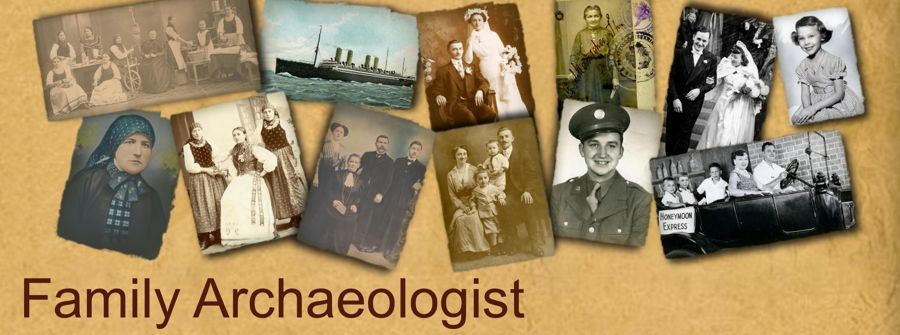This post was originally published on Christmas Eve, 2010, on the centennial of my grandfather's departure for America, and his diary record of his harrowing journey.
|
|
Josef Gärtz, 1909 or 1910, age 20 or 21
|
I'd always known my grandfather was often impatient, and apparently was so as a young man. I learned from my cousin's family (also from Neppendorf, the same Transylvanian town as Josef) that Josef didn't want to wait for the long visa process, so he just took off for America before his exit papers were in order. As we'll see from his diary entries, he almost didn't make it.
Here is a map of the route he planned to take, starting in Hermannstadt (Sibiu-hard to see on the map), traveling north to Klein Kopisch (Copsa Mica), and then west toward Budapest, through Bratislava, (a border stop), and on to Vienna. (Note: This is a modern-day map, but the cities have stayed in the same relative places.)
Christ Saturday (Christmas Eve), December 24, 1910
“I left from Hermannstadt [Sibiu] with Lichtneker [a friend] for America.”
Josef’s plan was to hook up with a third friend, Rastel, in a town called Klein Kopisch, and the three would travel together from there. The first snafu occurred almost immediately. When Josef and Lichtneker arrived in Klein Kopisch, they went to get coffee. Sure enough, as soon as they left the tracks, Rastel’s train pulled in! They jumped up, but by the time they found their friend and gathered their luggage, “the train slipped out right from under our noses, and we had to wait twelve hours for the next one.”
Sunday, Christmas Day, December 25, 1910
The three friends boarded the noon train to Budapest, about 270 miles away and, based on notes he made on a previous trip, a nineteen hour train ride. When they arrived in Budapest, on December 26th, he sent another postcard to Lisi Ebner (my future grandmother), this one much more upbeat than the one in the last post, and signed by all his companions as well:
Budapest, December 26, 1910
Dear Lisi,
I’m sharing with you that we have happily arrived in Budapest and today, on the 2nd Christmas Day, we will travel onward with the fast train, God willing. With greetings I wish you a Happy New Year [and] from all my colleagues.
Each signed in his own handwriting, thereby corroborating the friends’ names he had recorded in his diary.
Also from me: Johann Rastel
Also from me Andreas Lichtneker
It would be the last time the three young men would be together, for things went downhill before they ever got to Vienna.
In Budapest, they switched to a fast train to Vienna. In those days fifteen to twenty miles per hour was “fast.” Josef urged his friends not to sit together “in case they had to get away quickly, but they didn’t listen,” leading me to believe none of the three had proper papers. Josef followed his own advice and sat in a separate compartment with “two colonels." He fell asleep on the long train ride, which stopped in Bratislava, on the Austrian border. Josef was shaken awake by a border agent. “I threw him a frightened look, but he asked me in a friendly manner where I was traveling to."
“And what do you do in Vienna?”
“Work.”
The agent ordered Josef off the train. “I knew what that meant,” he wrote. Thinking fast, he concocted a daring solution. “Sure. No Problem. I just have to fetch my things,” he told the officer.
“I left my luggage behind, went out the door, climbed up the ladder, and lay down on top of the car. I cannot thank God enough for sending me this thought. But when the horrid train started to move, the sharp air cut through me so that I thought I would fly away like a piece of paper.”
Now picture this: it was December. At best, maybe 25-30 degrees. He would have been battered and buffeted by a frigid windchill for the 37 miles from Bratislava to Vienna. Based on the travel times he had recorded for previous trips, and the train moving at about fifteen miles per hour, that’s two hours he’d have to endure the terror of literally hanging on for dear life, wondering if he’d live to see Vienna, much less America.
In the next post, we'll find out what happened.




























